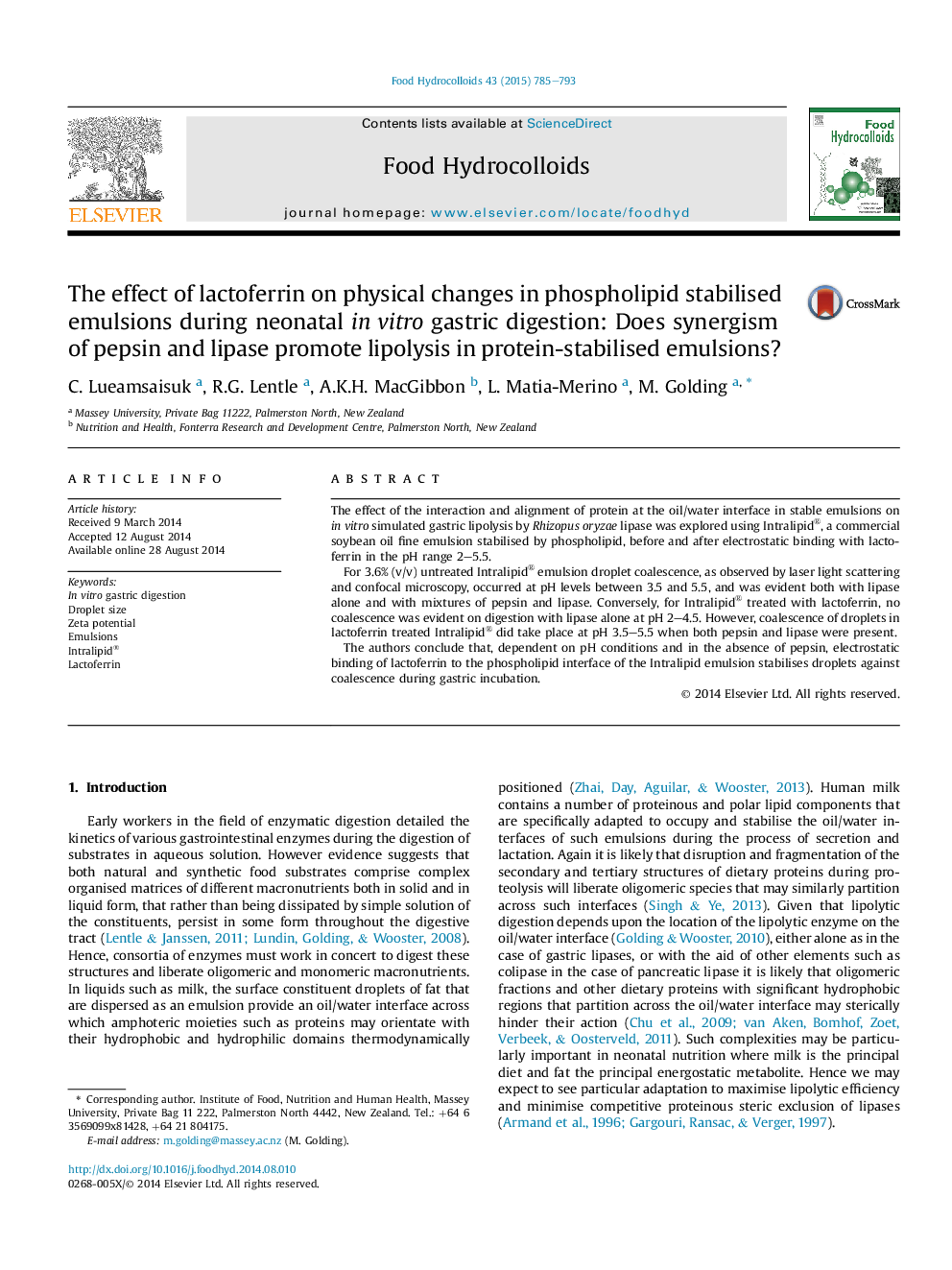| کد مقاله | کد نشریه | سال انتشار | مقاله انگلیسی | نسخه تمام متن |
|---|---|---|---|---|
| 604710 | 1454433 | 2015 | 9 صفحه PDF | دانلود رایگان |
• Phospholipid stabilised emulsions undergo coalescence in simulated gastric fluid.
• Surface complexation with protein inhibits coalescence in absence of pepsin or lipase.
• Coalescence occurs when both enzymes are present.
• Findings indicate interfcial protein may be inhibitory to lipase adsorption.
The effect of the interaction and alignment of protein at the oil/water interface in stable emulsions on in vitro simulated gastric lipolysis by Rhizopus oryzae lipase was explored using Intralipid®, a commercial soybean oil fine emulsion stabilised by phospholipid, before and after electrostatic binding with lactoferrin in the pH range 2–5.5.For 3.6% (v/v) untreated Intralipid® emulsion droplet coalescence, as observed by laser light scattering and confocal microscopy, occurred at pH levels between 3.5 and 5.5, and was evident both with lipase alone and with mixtures of pepsin and lipase. Conversely, for Intralipid® treated with lactoferrin, no coalescence was evident on digestion with lipase alone at pH 2–4.5. However, coalescence of droplets in lactoferrin treated Intralipid® did take place at pH 3.5–5.5 when both pepsin and lipase were present.The authors conclude that, dependent on pH conditions and in the absence of pepsin, electrostatic binding of lactoferrin to the phospholipid interface of the Intralipid emulsion stabilises droplets against coalescence during gastric incubation.
Figure optionsDownload as PowerPoint slide
Journal: Food Hydrocolloids - Volume 43, January 2015, Pages 785–793
